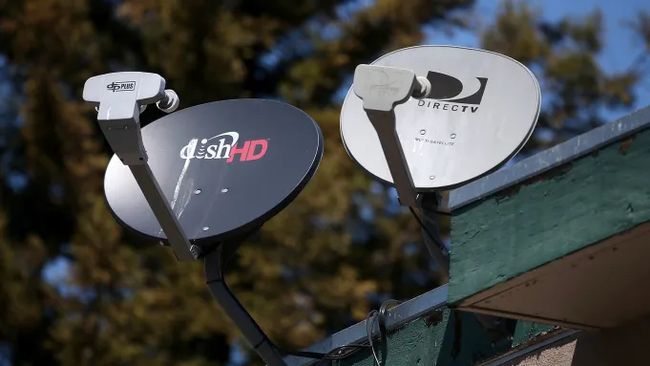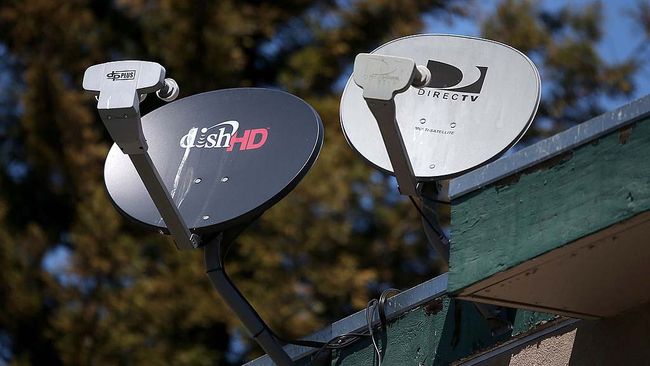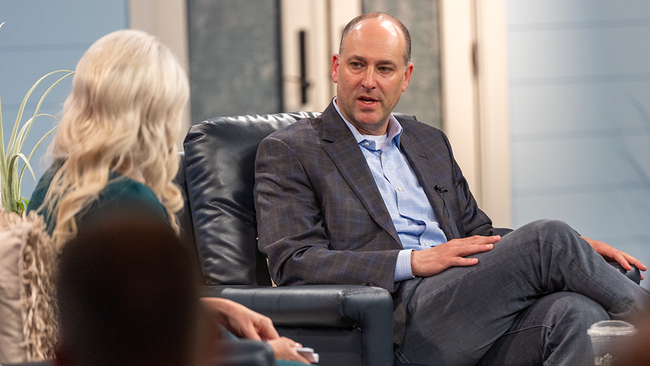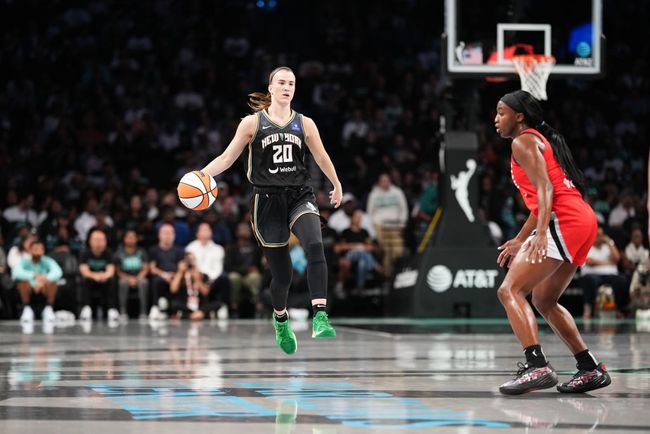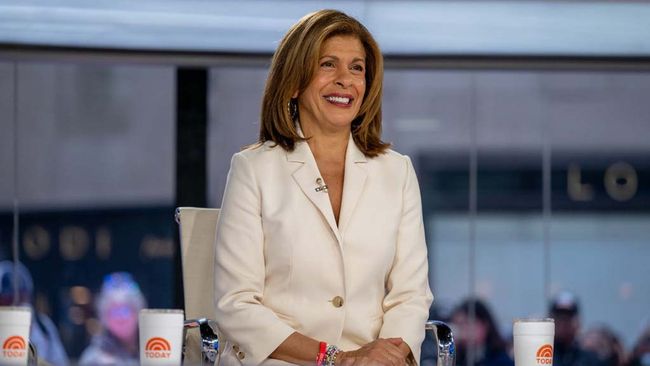Netflix Quietly Grabs the Gold After Q4's Many Hits
Bloom: Study suggests Netflix has become a must-have utility, and it raised prices not because it needed to ... but because it could

It’s tempting to think of Netflix’s Friday Night Price Massacre this past three-day weekend as a sign the company was trying to slip something over the transom while we’re all out partying down mid-pandemic. That’s possibly true, given the announcement’s timing amid increasing domestic competition and broader consumer concern over inflating prices for pretty much everything.

More likely, though, the hike suggests Reed Hasting’s crew is feeling a bit cocky at this stage of the streaming wars. They raised prices because they can. North American customers are unlikely to drop the service over a small price hike, especially after a quarter filled with heavily viewed blockbusters like Don’t Look Up, Red Notice, The Unforgivable, and The Lost Daughter, and new seasons of Cobra Kai, The Witcher and (grits teeth) Emily in Paris.
Also read: Netflix Hoists First North American Price Hike Since October 2020
Also, Wall Street likes it when the company extracts more money from its richest customers, especially just ahead of a quarterly earnings report like the one coming (checks calendar) Thursday afternoo
In case you missed it, and it’s entirely likely given the timing, U.S. and Canada prices for most Netflix plans will rise $1 to $2 a month, to a prodigious $19.99 a month for the top-end offering of 4K quality and up to 4 streams. The basic plan, a single stream at SD resolution, will rise to $9.99.
That puts it above just about everyone else in the market, with Amazon Prime Video $8.99 a month if you just don’t get it as a throw-in for free shipping, and HBO Max at $14.99 ($9.99 for the ad-supported tier).
As the company’s executives like to say, and almost certainly will again during this week’s earnings call, from time to time Netflix goes back to customers to ask for a little more money to reinvest in programming, creating a virtuous cycle of content and satisfied customers. The corporate response is more regular than the swallows returning to Capistrano.
NEXT TV NEWSLETTER
The smarter way to stay on top of the streaming and OTT industry. Sign up below.
Also worth looking at is a new study by WeThrift, looking at all the subscription services we pay for, from streaming video and music to food, clothing and beauty services, results broken down by generation.
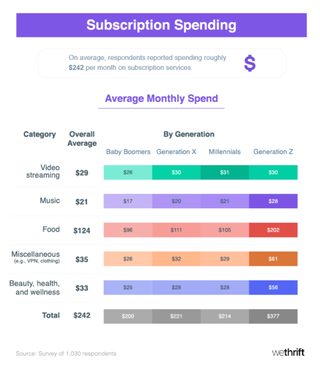
Perhaps it’s little surprise that always-connected Gen Z spent the most per month, $377, or more than $4,500 a year, driven by a much heavier usage of subscription food services such as Blue Apron. Compare that to the overall average of $278 per month.
Netflix wasn’t the favorite streaming service of any of the four generations, but it was part of the most common pairing, alongside Boomer favorite Amazon Prime. Nearly half of all respondents had that pairing, which suggests Netflix is seen more like a must-have utility, upon which people layer other services to fill out their viewing needs. Gen Z, of further note, considers Apple TV Plus its favorite.
All of which makes the recent challenges facing analysts in forecasting this week’s quarterly results almost comical. There is, it’s safe to say, a broad swathe of opinion, partly because of the difficulty in finding reliable early indicators like app downloads in international markets.
“Historical correlations between commonly used intra-quarter subscriber data for Netflix, such as app downloads and active users to predict Netflix subs, may be becoming less useful” in projecting subscriber growth. Barclays analyst Kannan Venkateshwar wrote. “Overall, we find that no single model is accurate enough to be useful.”
And we should contrast the U.S. price hike with Netflix’s latest strategy in India, where it dropped prices in late December on most plans. Most notable is pricing for the basic in-home plan, which now costs 199 rupees per month (about US$2.68), barely more than the mobile-only alternative.
India is Netflix’s biggest potential growth engine, though it faces major competition there, from Disney’s Star India, Amazon Prime Video, and Sony Pictures India’s recent merger with local power Zee Entertainment.
“Huge potential markets like India remain in their infancy, with Netflix having recently meaningfully reduced price (albeit a more precise analysis of India reveals that they are really trying to push mobile-only subscribers toward TV-based plans, likely because they know once you start consuming Netflix on the big screen that your engagement surges and churn is greatly reduced),” LightShed Partners wrote in its year-ahead tech/media/telecom predictions last week.
Many other analysts (but definitely not all) are also predicting Netflix will come somewhere near its own guidance of 8.5 million new subscribers for the quarter (18.4 million for the year). That the company typically beats its own guidance further bolsters their predictions.
Credit Suisse analyst Doug Mitchelson titled his take, “Buckling up for fourth-quarter results,” citing weak investor interest amid a broader market downturn. That said, Mitchelson maintained his “outperform” rating and a price target of $740 (shares jumped $10 a share Friday to about $525 when the price hike news surfaced).
Guggenheim’s Michael Morris wrote that “Investor focus remains acutely on member growth fourth-quarter actual (we estimate 8.5 million adds) and first-quarter 2022 guidance (we forecast 6.1 million).” He still calls investing in Netflix a “best idea.”
J.P. Morgan’s Doug Anmuth was slightly less optimistic, maintaining an “overweight” rating, but cutting his price target $25 to $725, and projecting only 5.5 million net adds next month, down 1 million from previous prognostications.
LightShed demurred, pointing to a star-laden Q4, with more hit shows on the way, like the second season of breakout Bridgerton and the first series from Shonda Rhimes (whose long-time deputy produced Bridgerton).
“The content cycle was simply too good, starting with the blockbuster performance of Squid Game late in Q3 2021 (heaviest new content slate in Netflix’s history in Q4 2021),” LightShed wrote. The often-contrarian analysts also predicted another couple of quarters of “very easy comps,” thanks to the India price cuts and yet more high-profile programming.
“In 2016-2019, Netflix’s annual global subscriber additions were 24 million per year,” LightShed concluded. “We expect 2022 to normalize with the content surge and India price cut helping drive subscriber additions back toward the mid-20 million range, implying Netflix could end 2022 approaching a quarter billion subscribers.”
And assessments like that, most likely, are why Netflix execs are feeling cocky enough to bump prices again (however subterranean the announcement), just in time to rake in plenty of cash for the next couple of quarters, and heavy slate of high-profile shows. ■
David Bloom of Words & Deeds Media is a Santa Monica, Calif.-based writer, podcaster, and consultant focused on the transformative collision of technology, media and entertainment. Bloom is a senior contributor to numerous publications, and producer/host of the Bloom in Tech podcast. He has taught digital media at USC School of Cinematic Arts, and guest lectures regularly at numerous other universities. Bloom formerly worked for Variety, Deadline, Red Herring, and the Los Angeles Daily News, among other publications; was VP of corporate communications at MGM; and was associate dean and chief communications officer at the USC Marshall School of Business. Bloom graduated with honors from the University of Missouri School of Journalism.

